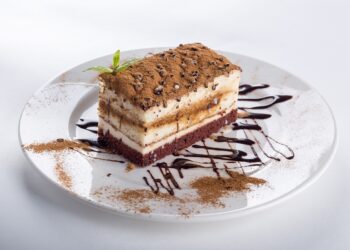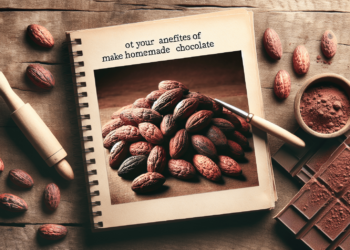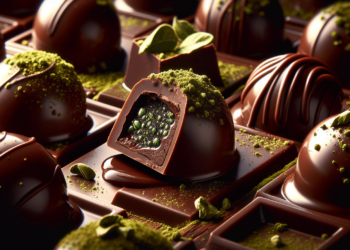Imagine a world without decadent chocolate bars, gooey chocolate chip cookies, or creamy chocolate ice cream. Impossible, right? But have you ever wondered how our ancestors enjoyed this beloved treat? In this article, we will take you back in time to explore the fascinating ways in which chocolate was commonly consumed throughout history. From ancient civilizations to modern times, get ready to discover the sweet and surprising stories behind the world’s favorite indulgence.
Chocolate in Ancient Mesoamerica
Origin of chocolate
Chocolate has a rich history that dates back to ancient Mesoamerica, where it was first cultivated and consumed by the indigenous civilizations of the region. The Mayans and Aztecs are particularly known for their love and appreciation of chocolate. They believed that the cacao tree, from which chocolate is derived, was a divine gift from the gods. The cacao beans were highly valued and considered to be a sacred food.
Cacao beans as a currency
In addition to being used as a food, cacao beans served as a form of currency in ancient Mesoamerica. The beans were used to trade for goods and services, and their value was comparable to that of gold. The reliability and widespread acceptance of cacao beans as currency speaks to the importance and desirability of chocolate in society at that time.
Drinking chocolate
Ancient Mesoamericans did not eat chocolate in the same way we do today. Instead, they consumed it in liquid form. The cacao beans were roasted, ground, and mixed with water, hot chili peppers, and other spices to create a frothy and invigorating drink. This bitter concoction was believed to have energizing and medicinal properties, and it was often reserved for the elite and used in religious ceremonies.
Chocolate in religious rituals
Chocolate played a significant role in the religious rituals of ancient Mesoamerican civilizations. It was often offered as a sacrifice to the gods during ceremonies and used as a sacred beverage during important religious events. The bitter taste of the chocolate was believed to represent the bittersweet nature of life and served as a symbol of spiritual connection and transcendence.
Chocolate in European Colonization
Introduction of chocolate to Europe
Chocolate was first introduced to Europe by the Spanish conquistadors who encountered the cacao beans during their conquest of Mesoamerica. The Europeans were initially skeptical of this new exotic beverage, but it quickly gained popularity among the upper class as a luxurious and exotic indulgence. The addition of sugar and other sweeteners helped to make the bitter chocolate more palatable to European tastes.
Chocolate as a luxury item
During the European colonial period, chocolate became a symbol of wealth and luxury. It was consumed primarily by the nobility and the upper classes, who could afford the expensive ingredients and the labor-intensive process of preparing the chocolate. Chocolate houses started to emerge as places for the elite to gather and enjoy this decadent treat, further cementing its status as a luxury item.
Chocolate houses and social gatherings
Chocolate houses became popular social spaces in Europe, particularly in cities like London and Paris. These establishments acted as social hubs where intellectuals, artists, and aristocrats would gather to socialize, conduct business, and discuss politics. The consumption of chocolate became associated with refinement and sophistication, as indulging in this luxurious beverage was a mark of status and cultural sophistication.
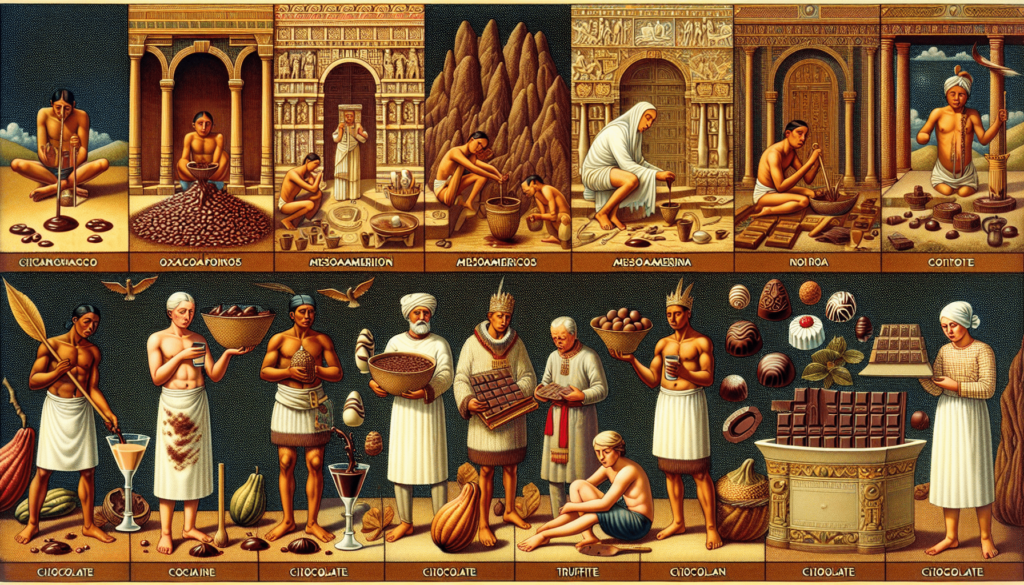
Chocolate in the Industrial Revolution
Invention of solid chocolate
The industrial revolution brought about significant changes in the way chocolate was produced and consumed. In the early 19th century, a breakthrough occurred with the invention of solid chocolate by Joseph Fry and his son. This innovation made chocolate more accessible to the general population, as it was no longer limited to being consumed in liquid form.
Chocolate bars and confectionery
With the invention of solid chocolate, the foundation was laid for the creation of chocolate bars and other confectionery products. Mass production techniques were developed, and chocolate became a popular treat that could be enjoyed by people from all walks of life. The accessibility and affordability of chocolate bars made them a staple in households and brought chocolate into the mainstream.
Chocolate in mass production
The industrial revolution revolutionized the chocolate industry, with mass production techniques leading to increased efficiency and affordability. This enabled chocolate to be produced on a larger scale, making it more readily available to a wider audience. As production methods improved, different varieties of chocolate and chocolate-based products emerged, catering to an ever-growing consumer demand.
Chocolate in the Modern Era
Chocolate as a popular dessert
In the modern era, chocolate has become a beloved and ubiquitous dessert around the world. Whether enjoyed in the form of a slice of velvety chocolate cake, a scoop of rich chocolate ice cream, or a decadent chocolate mousse, it has firmly established itself as a staple indulgence for many. Its versatility and wide range of flavors and textures make it a favorite choice among dessert enthusiasts of all ages.
Varieties of chocolate products
The modern era has seen an explosion of variety in chocolate products. From classic milk chocolate to dark chocolate, white chocolate, and even specialty variations infused with flavors like caramel, mint, or sea salt, there is something to please every palate. Additionally, the rise of artisanal and craft chocolate makers has led to an even greater appreciation for high-quality, single-origin chocolates that showcase the unique flavors of different cacao beans.
Chocolate in baking and cooking
Chocolate has also found its way into the realm of baking and cooking, where it is used to enhance and create a wide range of delectable treats. From rich chocolate chip cookies and gooey brownies to luxurious chocolate ganache and savory dishes with a touch of cocoa powder, its versatility in the kitchen knows no bounds. Incorporating chocolate into recipes adds depth and complexity to both sweet and savory dishes, making it a beloved ingredient among chefs and home cooks alike.
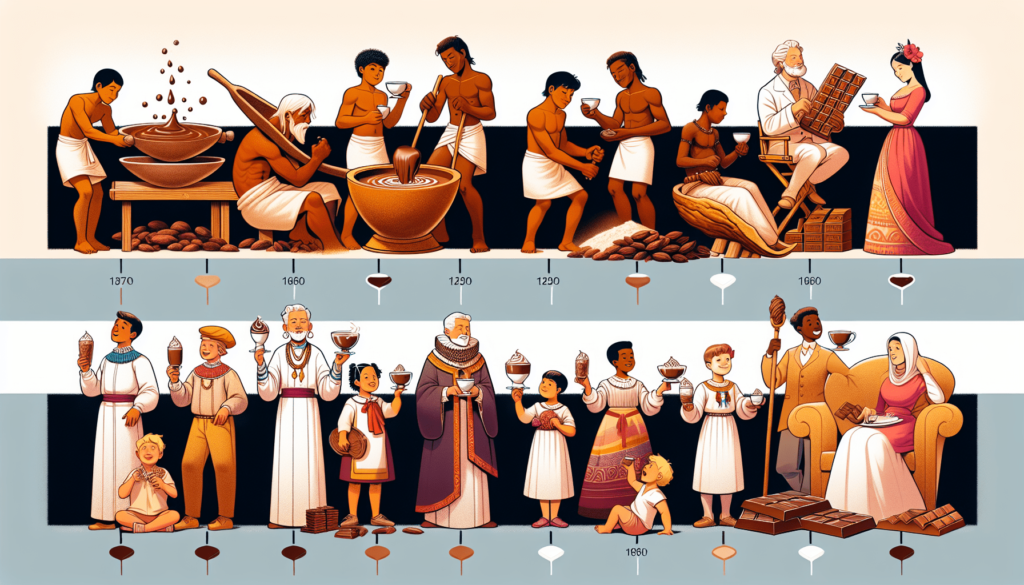
Health Benefits of Chocolate
Antioxidant properties
Dark chocolate, in particular, is known for its high antioxidant content. Antioxidants help to protect the body against free radicals, which can cause damage to cells and contribute to the development of various diseases. These antioxidants, such as flavonoids and polyphenols, are found in higher concentrations in dark chocolate, making it a potential source of health benefits when consumed in moderation.
Mood elevation and stress relief
Many people turn to chocolate during times of stress or as a mood booster, and there may be some scientific basis for this. Chocolate contains compounds that can stimulate the production of endorphins and serotonin, which are neurotransmitters responsible for feelings of pleasure and relaxation. Indulging in a small piece of chocolate can provide a temporary mood uplift and help alleviate stress.
Effects on heart health
Numerous studies have suggested that moderate consumption of dark chocolate may have positive effects on heart health. The flavonoids found in dark chocolate have been shown to potentially reduce the risk of heart disease by improving blood flow, reducing inflammation, and lowering blood pressure. However, it’s important to note that these benefits are specific to dark chocolate with a high cocoa content, and excessive consumption of high-sugar chocolate products can have detrimental effects on health.
Chocolate Consumption Trends
Global chocolate consumption
Chocolate consumption has risen steadily over the years, establishing it as one of the most popular indulgences worldwide. According to the International Cocoa Organization, global chocolate consumption reached an estimated 7.2 million metric tons in 2020. This increase can be attributed to factors such as growing disposable incomes, increased availability and affordability of chocolate products, and the evolving tastes and preferences of consumers.
Regional preferences
Different regions of the world have their own unique preferences when it comes to chocolate. In Europe, for example, dark chocolate is often favored, while in North America, milk chocolate tends to be more popular. In some countries, such as Switzerland and Belgium, there is a strong tradition of producing high-quality artisanal chocolates that are highly prized and sought after. The cultural and historical influences of each region contribute to the diverse chocolate consumption trends observed today.
Demographic factors
Demographic factors also play a role in chocolate consumption trends. Age, income level, and cultural background all influence the types and quantities of chocolate consumed. Younger demographics, for instance, may be more drawn to trendy and experimental flavors, while older generations may have more traditional preferences. Additionally, income level can affect the accessibility and affordability of higher-end chocolates, leading to variations in consumption patterns across different socioeconomic groups.
Popular Chocolate Products
Chocolate bars
Chocolate bars have remained a staple in the chocolate industry and continue to be a favorite among consumers. They come in various sizes, flavors, and textures, catering to different tastes and preferences. Whether it’s a classic milk chocolate bar, a smooth and velvety dark chocolate bar, or a unique blend of flavors, chocolate bars offer a convenient and satisfying way to enjoy this indulgent treat.
Truffles and pralines
Truffles and pralines are luxurious and decadent chocolate confections that are often associated with special occasions and gift-giving. These bite-sized delights are typically made with a ganache center, which is a creamy mixture of chocolate and cream, coated in a layer of chocolate. Their soft and melt-in-your-mouth texture, combined with a variety of flavorings and fillings, make them a popular choice for chocolate enthusiasts.
Hot chocolate and cocoa powder
Hot chocolate and cocoa powder are beloved beverages that provide warmth and comfort, especially during the colder months. Hot chocolate is made by dissolving chocolate shavings or cocoa powder in hot milk, while cocoa powder can also be used in baking and cooking. Both options allow for customization with added flavors such as marshmallows, whipped cream, or a sprinkle of cinnamon, making them versatile and endlessly enjoyable.
Chocolate in Special Occasions
Chocolate gifts for Valentine’s Day
Valentine’s Day is closely associated with the tradition of giving chocolates as a token of love and affection. Gifting a box of chocolates has become a romantic gesture, symbolizing sweetness and devotion. Heart-shaped chocolate boxes filled with an assortment of truffles and pralines are particularly popular during this time, providing a sweet indulgence that complements the celebration of love.
Chocolate Easter eggs
Chocolate Easter eggs are a beloved tradition during the Easter holiday. These hollow chocolate eggs are often filled with small surprises such as candies or toys, adding an element of excitement to the experience of consuming them. The art of decorating chocolate eggs has also evolved into an intricate and creative craft, with beautifully designed and handcrafted eggs becoming highly sought after by collectors and chocolate enthusiasts.
Chocolate wedding favors
Chocolate wedding favors have become a popular choice for couples looking to express gratitude to their guests. These edible gifts can be customized with the couple’s names or a personalized message, adding a personal touch to the celebration. From chocolate truffles to miniature chocolate bars, wedding favors provide a delicious and memorable token of appreciation for friends and family on this special day.
Ethical and Sustainable Chocolate
Fair trade chocolate
Fair trade chocolate aims to promote ethical practices in the chocolate industry by ensuring that farmers and workers are paid fair wages and have safe working conditions. It also seeks to minimize the environmental impact of chocolate production. Choosing fair trade chocolate allows consumers to support sustainable farming practices and help improve the livelihoods of cocoa farmers and their communities.
Bean-to-bar production
Bean-to-bar chocolate production is a movement that emphasizes transparency and traceability in the chocolate-making process. This approach involves sourcing cacao beans directly from farmers, often through direct trade relationships, and carefully overseeing every step of the production process to ensure quality and sustainability. Bean-to-bar producers prioritize the use of high-quality beans and strive to showcase the unique flavors and characteristics of different cacao origins.
Certifications and transparency
Numerous certifications and labels exist to help consumers make informed choices about the chocolate they purchase. These certifications, such as Rainforest Alliance, UTZ Certified, and Fairtrade, provide assurance that the chocolate has been produced under certain social and environmental standards. They ensure that the cocoa beans used in the production are sourced responsibly and that the workers involved in the process are treated fairly. By looking for these certifications, consumers can support brands that prioritize transparency and sustainability.
Future Trends in Chocolate Consumption
Innovations in chocolate technology
As technology continues to advance, so too does the chocolate industry. Innovations in chocolate technology are driving new trends and possibilities, such as 3D printing of chocolate creations and personalized chocolate creations. These advancements provide opportunities for customization and creativity, allowing consumers to have a more immersive and interactive experience with chocolate.
Alternative ingredients and flavors
In response to changing consumer preferences and dietary restrictions, there is a growing demand for alternative ingredients and flavors in chocolate. Vegan and dairy-free chocolates, for example, are becoming increasingly popular as more people adopt plant-based lifestyles. Additionally, the use of unique and unconventional ingredients like matcha, coconut, and spices is finding its way into chocolate products, providing a diverse range of flavors to cater to different tastes.
Changing consumer preferences
Consumers today are more health-conscious and environmentally aware than ever before, and these factors are influencing their preferences in chocolate consumption. There is an increased demand for healthier options such as sugar-free or low-sugar chocolates, as well as chocolates made with organic and sustainably sourced ingredients. Additionally, there is a growing interest in single-origin chocolates and the story behind the cacao beans used, as consumers seek to align their values with the chocolate they consume.
In conclusion, chocolate has come a long way from its humble origins in ancient Mesoamerica to becoming a beloved and ubiquitous treat worldwide. Its cultural significance, versatility, and ability to bring joy and indulgence have ensured its enduring popularity. As we look to the future, innovations, changing consumer preferences, and ethical considerations will continue to shape the chocolate industry. Whether enjoyed as a bar, truffle, or in baked goods, chocolate remains a delightful indulgence that transcends time and borders.

